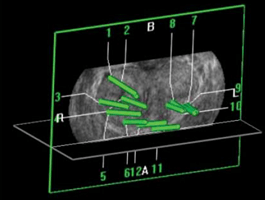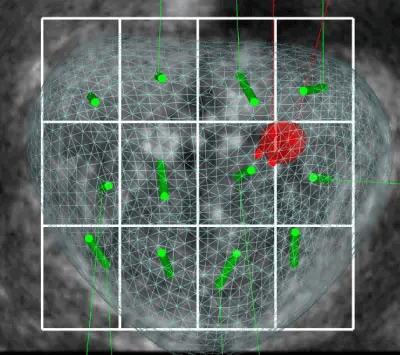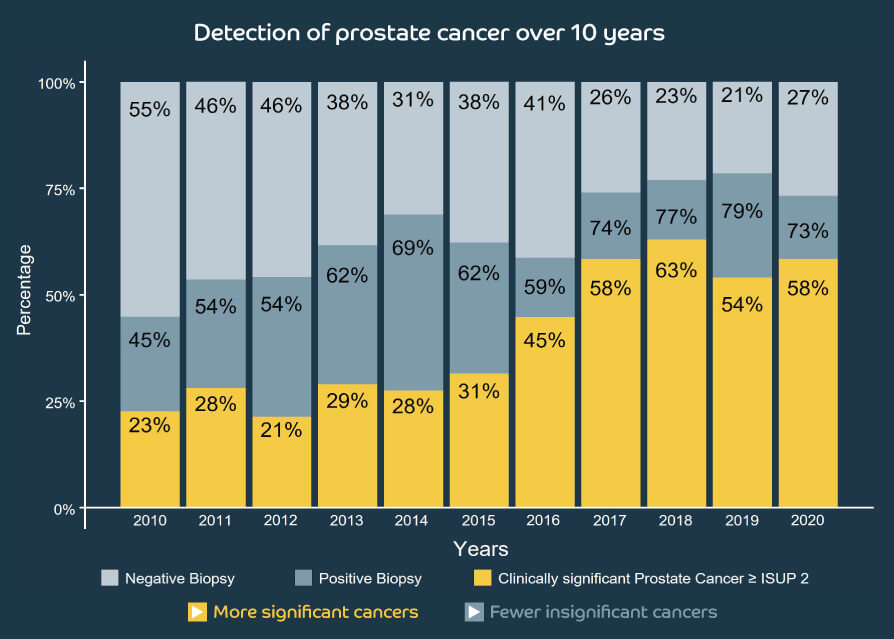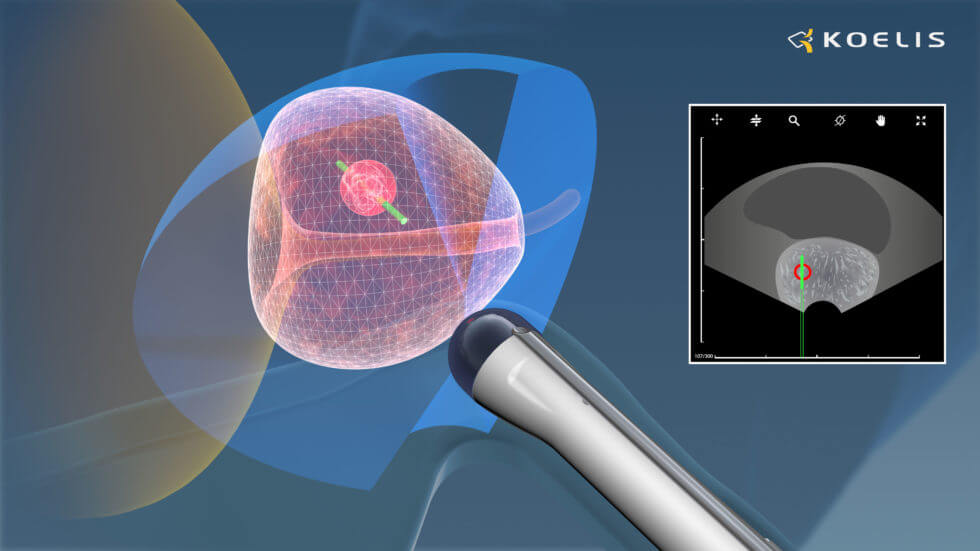Transrectal Biopsy – Procedures
“Blind” Transrectal Biopsy
The 2D ultrasound image enables the urologist to navigate the prostate and spread out the biopsies (generally 12 biopsies, 6 per prostatic lobe) according to a sextant pattern in order to maximize their effectiveness.

12-core template for “blind” transrectal biopsies, left base not sampled (1)
The random nature of this method is such that the presence of significant cancers cannot be excluded.
Therefore, this substandard approach is characterized by an inadequate, uncertain diagnosis that contributes to overtreatment and undertreatment.
MRI/US transrectal fusion biopsy
A precise diagnosis is essential to determine the best treatment pathway.
The use of MRI to detect prostate cancer represents the latest revolution in prostate cancer diagnosis. Prior to its development, ultrasound probes were only used for guidance, as they are limited to organ contour imaging, not the tumor within.
Prostate fusion biopsy is a revolutionary technology made possible by overlaying ultrasound images of the prostate with MRI sequences for visualization and targeting of lesions. Suspect areas detected by the MRI are thereby displayed on the ultrasound scanner, allowing the urologist to target the necessary biopsies.
This approach to prostate diagnosis and care has significant benefits for clinical teams and patients, eliminating the randomness of standard TRUS prostate biopsies.
KOELIS® Technology for transrectal biopsy
At KOELIS, we specifically perform Elastic MRI/US Fusion, meaning the MRI is actually adapted to perfectly match the ultrasound, taking this fusion to a new, higher level of accuracy.
We have developed the only fusion technology that tracks the prostate itself, instead of the probe. This technology, called OBT Fusion® (Organ Based Tracking Fusion), is what makes the KOELIS® solution unique.
Our 3D transducers combined with OBT Fusion® technology detect the slightest patient movement and prostate deformation for accurate guidance and recording of the procedure.

KOELIS 3D mapping: Precise, targeted localization, and good sampling of systematic biopsies.
The KOELIS Trinity® has set a new standard in prostate fusion biopsy accuracy and reliability by maximizing the detection of clinically significant cancers and minimizing insignificant cancers. It is the system of choice in many of the world’s leading centers. (2)

- Clinically significant cancer detection X2.5 in 10 years from 23% to 58%.
- Clinically insignificant cancer decreases to a <20% ratio by ruling out negative MRI in 2015.
- Results were obtained with more targeted, less systematic biopsy cores over time.
Publications
- 1Mapping of Transrectal Ultrasonographic Prostate Biopsies – Pierre Mozer et al. Technical Advance – 2009
- 2Single-centre evaluation of systematic and targeted MRI biopsies for the diagnosis of prostate cancer – Lenfant et al. World Journal of Urology – 2022
 United States
United States
